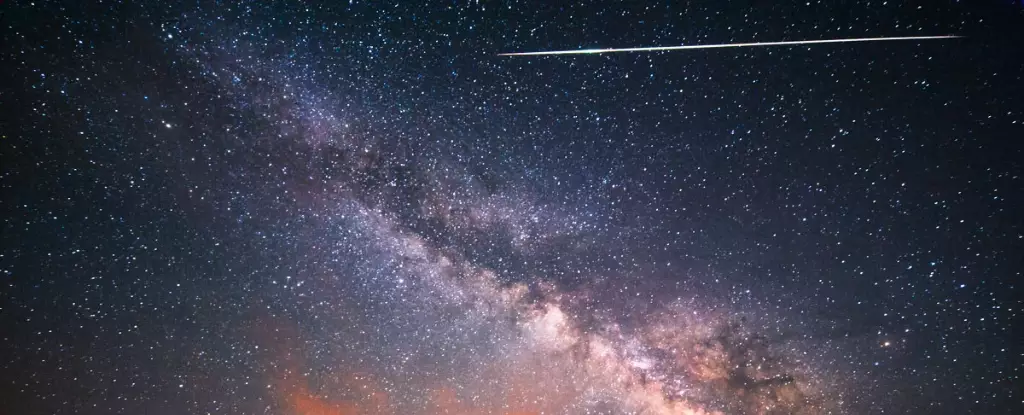Meteors, or shooting stars, are a breathtaking sight that can be observed on any given night. The Earth’s journey around the Sun brings us into contact with various streams of dust and debris from comets and asteroids, resulting in what we know as meteor showers. These showers offer a dramatic increase in the number of shooting stars visible in the night sky, creating a mesmerizing celestial spectacle.
The Eta Aquariid Meteor Shower
One of the most captivating meteor showers is the Eta Aquariid shower, caused by debris left behind by Halley’s comet. As Earth passes through this debris stream, the number of visible meteors intensifies, making it an extraordinary event to witness. The peak of the Eta Aquariids aligns with a new Moon this year, ensuring exceptionally dark skies before dawn, ideal for observing the fragments of this renowned comet raining down.
Halley’s comet, officially known as 1P/Halley, completes an orbit around the Sun roughly every 76 years. Over thousands of years, the comet has shed dust and gas, dispersing debris across its orbit. Earth intersects this debris stream twice a year, resulting in two notable meteor showers. While the Orionids in October are more widely recognized, the Eta Aquariids in May are considered the more spectacular of the two, bringing a flurry of shooting stars to the nighttime sky.
The Eta Aquariids are particularly impressive from the southern hemisphere, making it challenging to observe from regions north of the equator. In the southern hemisphere, the radiant of the meteor shower, located in the constellation Aquarius, rises at an optimal time for observation. In Australia, for instance, the radiant ascends around 1:30 am to 2:00 am local time, providing a substantial window for viewing the celestial display.
When observing meteor showers, the higher the radiant rises in the sky, the better the viewing experience. The first hour after the radiant ascent may yield fewer meteors, but it offers the opportunity to witness “earthgrazing” meteors streaking across the atmosphere. As the radiant climbs higher, the frequency of meteors increases, peaking in the hours just before dawn. During this peak period, observers can expect to see 20 to 30 meteors per hour, creating a mesmerizing sight in the early morning sky.
This year’s Eta Aquariid meteor shower holds the promise of enhanced activity, with scientists suggesting it could be one of the strongest of the entire 21st century. While predicting meteor shower activity is challenging, the ideal conditions present this year, coupled with the potential for heightened rates, make it a celestial event not to be missed. Whether the meteor shower delivers as expected or not, it remains a remarkable experience for skywatchers.
To make the most of the Eta Aquariid meteor shower, plan a weekend getaway to a dark location away from city lights. Settle in comfortably and gaze towards the eastern sky in the early morning hours to witness nature’s own fireworks show. With the peak falling on May 6, coinciding with a public holiday in certain regions, taking the time to revel in the celestial display promises a memorable start to the day.


Leave a Reply